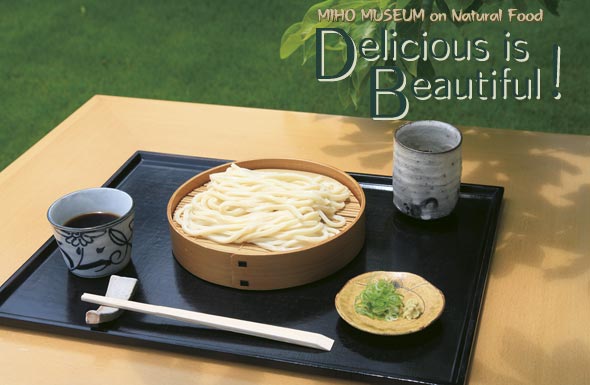

Offering our visitors the best of nature using no additives.
| Restaurant Peach Valley Café Pine View |
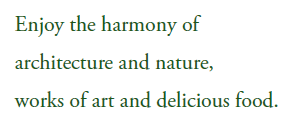

In Japan, the best udon
noodles are said to come from Sanuki Province, so what can one expect in
the mountains of Shiga? Some people may laugh but then they are
pleasantly surprised. We are absolutely confident of our hand-kneaded
udon, made from Canadian wheat.

What is surprising is the vigor of these noodles and how they flow into your mouth and dance like a wave! The rhythm is like the festive sound of a beating drum in the summer. Boom, boom, boom! There is something familiar about this energetic beat. The noodles slip down your throat unnoticed, then comes the dipping sauce. The intense fragrance and flavor of the stock combined with the choicest soy sauce and mirin penetrate your palate. Add to that a subtle hint of scallions and grated ginger and one wonders how such simple ingredients can produce this delicate taste?
What is surprising is the vigor of these noodles and how they flow into your mouth and dance like a wave! The rhythm is like the festive sound of a beating drum in the summer. Boom, boom, boom! There is something familiar about this energetic beat. The noodles slip down your throat unnoticed, then comes the dipping sauce. The intense fragrance and flavor of the stock combined with the choicest soy sauce and mirin penetrate your palate. Add to that a subtle hint of scallions and grated ginger and one wonders how such simple ingredients can produce this delicate taste?
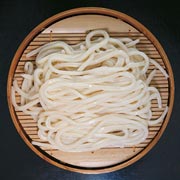
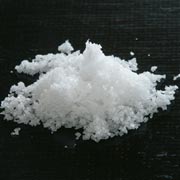
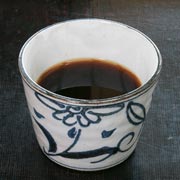
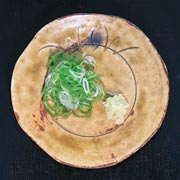
MIHO MUSEUM’s hand-kneaded udon project
began last year. Until then, we relied on machines to produce our
noodles, but we wanted to try our hand at improving udon. We
began experimenting by mixing Japanese and Canadian wheat together and
kneading this mixture by hand. Could we do this? Our cooks started
trying different udon restaurants throughout the entire Kinki
region but nothing hit the spot, so they went to Sanuki Province, where
they found a whole udon culture. Sanuki was undoubtedly the
home of udon. Grandparents, parents, students, and even little
children ate udon, and all the udon tasted different
but all were delicious and inexpensive. This is how Sanuki’s udon
culture helped to produce MIHO MUSEUM’s new udon.

Making udon does not have definitive rules. It took many trials and errors to figure out what is important in making them. We discovered the right amount in mixing together flour and water at the same time. We found the right pressure at which to knead the mixture by foot. We figured out the right amount of time to let the dough rise. Yet something was not right. Then we thought about the salt that went into the noodles. Salt didn’t seem so significant at first, but when we changed the salt, the taste of the noodles completely transformed. We tried ten different types of salt in various amounts and found that the saltiest East China Sea salt brought a strong sweetness out of our noodles, which consisted of 100% strong Canadian wheat. The balance of robust flavors and ingredients produced the amazing taste of our new noodles.

For our stock, we use a deep pot so that the bonito, konbu seaweed, and dried fish have plenty of room to swim around in. If they start dancing too quickly, the flavor becomes bitter. We adjust the heat so that it is not too strong or too weak and we completely remove the lye. Then the scallions are cut as finely as possible and the ginger is carefully grated so that they do not interfere with the flavorful texture of the dancing noodles. Of course, all our ingredients are organic and free of agricultural chemicals and chemical fertilizers.

The stock and condiments create a fine balance with our firm noodles to bring you the rich and smooth flavor of our udon dish. Come experience this amazing udon.
Making udon does not have definitive rules. It took many trials and errors to figure out what is important in making them. We discovered the right amount in mixing together flour and water at the same time. We found the right pressure at which to knead the mixture by foot. We figured out the right amount of time to let the dough rise. Yet something was not right. Then we thought about the salt that went into the noodles. Salt didn’t seem so significant at first, but when we changed the salt, the taste of the noodles completely transformed. We tried ten different types of salt in various amounts and found that the saltiest East China Sea salt brought a strong sweetness out of our noodles, which consisted of 100% strong Canadian wheat. The balance of robust flavors and ingredients produced the amazing taste of our new noodles.
For our stock, we use a deep pot so that the bonito, konbu seaweed, and dried fish have plenty of room to swim around in. If they start dancing too quickly, the flavor becomes bitter. We adjust the heat so that it is not too strong or too weak and we completely remove the lye. Then the scallions are cut as finely as possible and the ginger is carefully grated so that they do not interfere with the flavorful texture of the dancing noodles. Of course, all our ingredients are organic and free of agricultural chemicals and chemical fertilizers.
The stock and condiments create a fine balance with our firm noodles to bring you the rich and smooth flavor of our udon dish. Come experience this amazing udon.